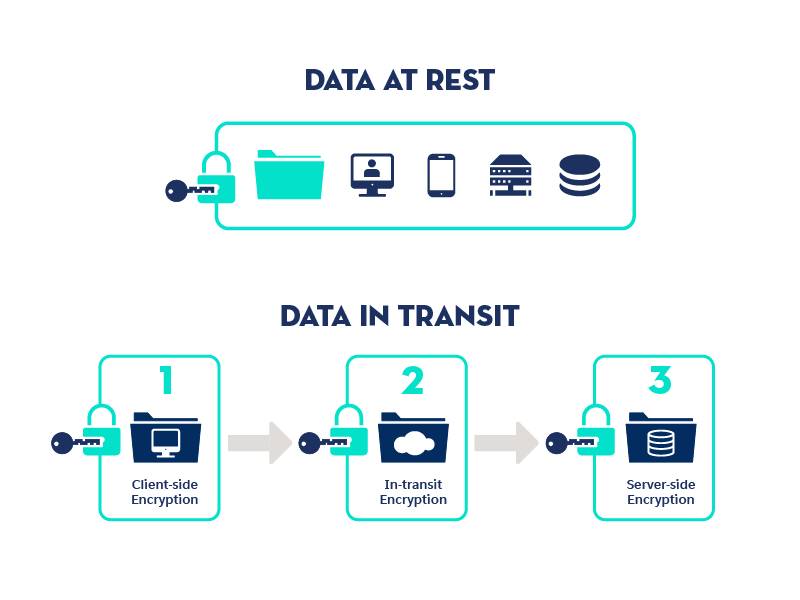What are the Challenges of Big Data?
Big data is everywhere—in our phones, computers, and cars. It includes vast amounts of information from various sources like social media, sensors, and transactions. But with so much information, handling big data isn’t easy. Let’s explore the challenges of big data management.

Understanding the Vastness of Big Data
Big data means a lot of information. Think of it like a huge ocean. It’s made up of countless pieces of data from different places. Your social media posts, online purchases, and fitness tracker contribute to big data. But with so much information, things can get tricky.
Volume, Velocity, and Variety: The Three V's of Big Data
To understand the challenges of big data management, you need to understand its various aspects. Volume, Velocity, and Variety are the three V's of Big Data. They describe the massive size, rapid speed, and diverse types of data that require special lized management tools and techniques.

Volume
- Refers to the sheer amount of data.
- Comparable to a mountain of information continuously growing.
- Storing this data requires ample space and specialized tools.
- Every interaction online contributes to this vast volume.
- Handling the sheer volume requires robust storage solutions.
Velocity
- Represents the speed at which data accumulates.
- Data doesn’t wait; it rushes in rapidly, akin to a flowing river.
- Social media updates and real-time information exemplify data velocity.
- Keeping pace with this influx demands quick and agile processing.
- Effective management of data velocity requires rapid processing capabilities.
Variety
- Encompasses the diverse forms of data.
- Data isn’t uniform; it comprises text, images, videos, and more.
- Each type of data necessitates unique handling methods.
- Sorting and organizing varied data types can be complex.
- Specialized tools are essential for managing the diversity of data.
That’s why organization & segmentation is one of the major challenges of big data management. The bigger the system, the harder it is to make sense of the data you’re constantly receiving.
Security and Privacy Concerns in Big Data
The challenges of big data, aren’t challenges but ethical responsibilities, especially when it comes to security and privacy. Let’s dive into how we can protect sensitive information and address privacy concerns in the vast landscape of big data.

Protecting Sensitive Information (What & How)
When it comes to data security, we're talking about keeping your information safe from prying eyes. In the world of big data, there are numerous threats that can compromise your data.
Suggested Reading: Hadoop Ecosystem in Big Data
Data Security Threats in Big Data Environments
Big data environments are like bustling cities filled with data highways. Just like any city, they attract unwanted attention. Here are some common threats:
- Hackers: Cybercriminals looking for vulnerabilities to exploit, attempting to steal or manipulate your data.
- Ransomware: Malicious software that locks your data until a ransom is paid, similar to a digital hostage situation.
- Phishing Attacks: Fraudulent attempts to obtain sensitive information by disguising as trustworthy entities.
- Insider Threats: Employees or partners who misuse access to data for malicious purposes.
- Data Breaches: Unauthorized access to data, leading to potential exposure of sensitive information.
Understanding these threats is crucial for implementing robust security measures to protect sensitive information in big data environments.

Strategies for Data Encryption and Access Control
Challenges of big data include protecting sensitive information with encryption and access control, ensuring security during storage and transmission. Let’s see the strategies employed for this task.
Encryption at Rest
- Protects data stored on disks or databases.
- Uses algorithms to convert data into unreadable formats.
- Ensures data remains secure even if storage is compromised.

Encryption in Transit
- Protects data while it's being transmitted over networks.
- Employs protocols like SSL/TLS to secure data transfer.
- Prevents interception and tampering during transmission.

End-to-End Encryption
- Encrypts data from the sender to the recipient.
- Ensures only authorized parties can access the data.
- Commonly used in messaging apps and secure communication.

By implementing encryption techniques, organizations can enhance data security, mitigating storage and transmission risks, which are common challenges of big data.
Data Quality and Management
Managing data isn’t just about having lots of it; it’s about having good data. To overcome the challenges of big data & make most of it, we need to ensure its quality and manage it well.
Let’s explore how to keep data accurate and comply with rules and regulations.Having accurate and complete data is like having a clear, detailed map. If the map is blurry or has missing parts, you’ll get lost. The same goes for data. Ensuring accuracy and completeness is crucial for reliable data analysis and decision-making.
Techniques for Data Cleansing and Error Correction
Data cleansing is like cleaning your room. You get rid of things you don’t need and organize what you do. Here are some techniques:
- Removing Duplicates: Imagine having multiple copies of the same book. It clutters up space. Removing duplicates clears up your data.
- Correcting Errors: This is like fixing typos in a document. It ensures that names, dates, and numbers are all correct.
- Filling Missing Values: Sometimes, data has gaps, like a puzzle missing pieces. Filling in these gaps makes the data whole.
Frequently Asked Questions (FAQs)
What are the primary security challenges of big data handling?
The main challenges of big data include ensuring data privacy, preventing unauthorized access, and protecting against data breaches within large and complex datasets.
How does data quality affect big data analytics?
Poor data quality can lead to inaccurate analyses, misleading insights, and incorrect decisions, making it crucial to maintain high standards of data accuracy and completeness.
What are the difficulties in integrating disparate data sources in big data?
Integration issues arise due to different formats, structures, and the need for real-time processing, making unified data analysis challenging.
How does the volume of big data impact storage solutions?
The sheer volume requires scalable and cost-effective storage solutions, posing challenges in terms of infrastructure costs and data management efficiency.
What are the challenges of real-time data processing in big data?
Real-time processing demands fast, efficient computing resources and algorithms to analyze and act on data as it's generated, challenging traditional data processing capabilities.
How do regulatory and compliance issues add up to the big data problems?
Navigating the complex landscape of data protection laws and ensuring compliance while managing vast amounts of data across different jurisdictions is a significant challenge
What are the challenges of conventional systems in big data?
Conventional systems struggle with big data problems like scalability, speed, and efficiency, unable to handle massive volumes and complex processing demands.
